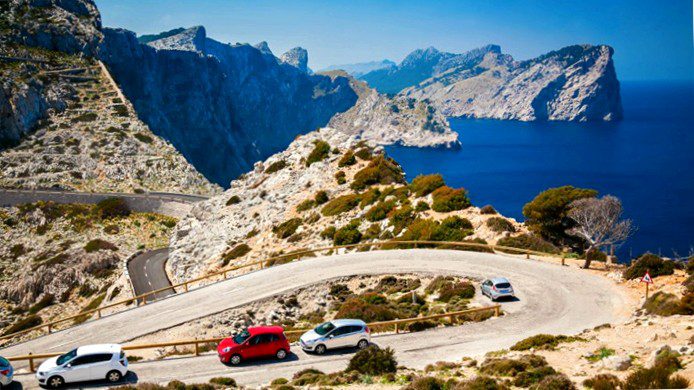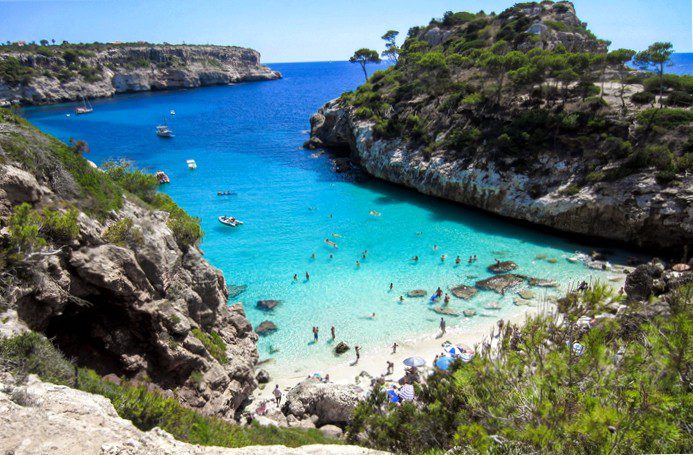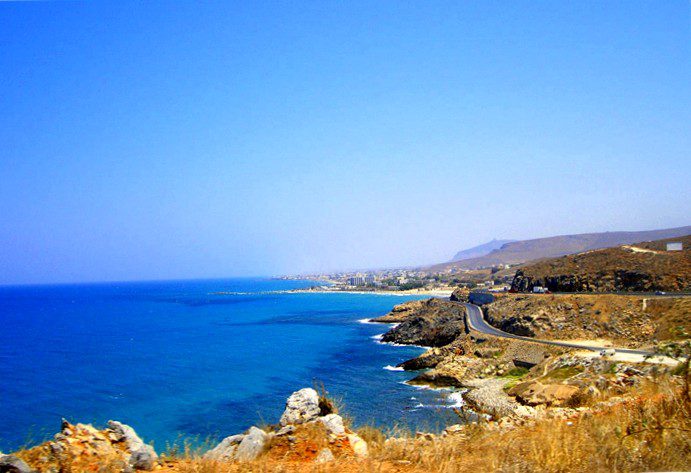

Mallorca explore the popular island with a rental car

Crete Explore the beautiful island by rental car
Algarve by rental car Portugal's fascinating coastline
Accelerate on vacation – but with caution!
On vacation, there is nothing better than to explore the vacation destination independently with your own rental car. Traveling with one's own vehicle can also initiate a varied vacation period. Especially for families, who usually carry more than the 20 kg of luggage allowed for air travel, the car as a means of transport brings some advantages. If you are traveling in other European countries, you should find out in advance about the applicable traffic regulations; TravelScout24 can help you in this section. Here you can get an initial overview of what you should look out for on a trip on distant asphalt..
- Driver's license
- Specifics in individual countries
- traffic offences
- Top 5 tips
With most within the EU states you can drive with your German driver's license without hesitation. Even in tourist areas within the U.S., the usual driver's license is sufficient. If you explore Iceland or the Baltic countries Estonia, Latvia, Lithuania by motor vehicle on your own, you need an international driver's license in any case. You can obtain this from your driver's license office or the citizens' registration office. The processing time is about five weeks. Note that you have a check card driver's license, because a paper driver's license is not accepted as a requirement. Otherwise, you will have to exchange your old driver's license for a check-card driver's license.
This document is also recommended in Malta, Moldova and Ukraine. To apply for an international driver's license, you need to have your current identification documents, your German driver's license and passport photos ready. The international driver's license is then valid for three years and can not be extended.
Other countries, other traffic rules – this also applies to other European countries. The following is a selection of popular road trip vacation destinations, you should in any case before you start to inform yourself in detail about your destination area. As a matter of principle, stick to these rules, even if the locals often set a bad example and don't stop at crosswalks or red lights. The fines for even minor traffic offences are in many cases significantly higher than in Germany. For novice drivers who have held their license for less than two years, special rules apply with regard to blood alcohol limits and speed limits.
France
If you are traveling by car in France, keep plenty of change or a credit card handy. On almost all freeway routes you have to pay tolls, as a guideline you can calculate ca. budget seven euros per 100 kilometers. In general, you must take off the gas on the highways of France, the uniform speed limit of 130 km / h may not be exceeded. You are allowed to drive on expressways at a speed of 110 km/h, within built-up areas the same rules apply as in Germany. Novice drivers are allowed to drive 110 km/h on highways, 100 km/h on expressways.
You can park in zones marked in blue with a parking disc, yellow stripes at the edge of the road signal an absolute parking ban. Keep this absolutely, the fines are usually higher than in Germany and can put a heavy strain on the travel budget.
Great Britain and Ireland
If you go on a long trip by car in Great Britain, you will already see the sign for left-hand traffic when you drive through the Eurotunnel or leave the ferry. Therefore, please do not be surprised if the British rental cars have the steering wheel on the "wrong" side for us. The numerous traffic circles can be particularly problematic: Please drive around to the left, when leaving them, get into the left, outer lane at multi-lane "roundabouts".
Overtaking also needs to be learned: Right instead of left is the motto here. If you are driving your own car, "trim" the headlights with a masking film from a specialty store, otherwise you will dazzle oncoming traffic with the cones of light aimed at the right edge of the lane.
Speeds are given in miles per hour and are generally slower than in Germany: on the freeways you drive at 70 m/h (equivalent to 120 km/h), within British and Irish towns you may drive at a maximum of 48 km/h.
Tolls on freeways do not apply. However, in the center of London you have to pay a congestion charge of approx. Pay 12 euros per day.
You can recognize the parking prohibition by the red and yellow markings at the edge of the roadway. A double white line signals you a no stopping zone. If you park directly on two red lines, you will be towed away shortly.
Next to the stop sign, the "Give Way" sign indicates that you must yield the right of way. A white cross line also indicates a stop sign. If the marking of the right of way is missing, you have to communicate by flasher or hand signal.
Italy
Similar to France, you can expect to pay tolls of seven euros per 100 kilometers in Italy. By the way, you can also pay for this cashlessly with your credit card. The speed limit on freeways is 130 km/h, in towns you drive with 50 km/h like in Germany.
You should not park on curbs marked in black and yellow, because parking is absolutely prohibited here.
See and be seen: Even during the day, you must drive with dipped headlights on highways and country roads here.
A high-visibility vest belongs in every vehicle. during a normal traffic control you will be betsraft with a fine, should the warning vest be missing.
Unfortunately, you cannot fill up your tank, because it is strictly forbidden to carry reserve canisters. There is also a special feature at traffic circles. Here, as in France and Austria, you have the right of way when driving on it. However, Italians do not comply in every case. Therefore, drive very attentively and in principle more cautiously than the locals.
Austria
On the Austrian freeways you need a vignette, which costs about 9 euros for ten days and takes up 26 euros of your travel budget for two months. For the Brennereuropabrucke and the Tauernautobahn a special toll is charged. Note that the speed limit of 130 km/h on freeways has been lowered to 110 km/h between 10 pm and 5 am tomorrow.
You can recognize the parking ban by the yellow jagged lines located at the edge of the lane.
The right-of-way rules can change in ongoing traffic, because the person who stops loses his right of way.
In Austria, the same applies: Only drive with your lights on!
Switzerland
Here you also need a vignette for driving on a freeway. These can be obtained at rest areas and service stations near the border, as well as from the ADAC. The speed limit is 120 km/h, on country roads you are allowed to drive at a maximum speed of 80 km/h. Especially in Switzerland, traffic offenses are punished with high fines: There are z.B. no tolerance limit for speeding as in Germany. If you drive even one kilometer per hour too fast, you pay 40 Swiss francs.
In Switzerland, too, colorful lane markings indicate that parking is prohibited. On the blue areas you can only park for a limited period of time, yellow lines indicate a no-stopping zone, while yellow crosses with yellow connecting lines indicate an absolute no-parking zone.
The joy of the drivable vehicle on vacation is great. Fines, which you have to pay due to ignorance of the applicable traffic rules, are less popular. In principle, the fines in other European countries are higher than in Germany – therefore, inform yourself comprehensively about the respective local regulations before starting your journey. Even across borders, you will be prosecuted for minor or major traffic offenses, because by charging with a credit card you deposit your data at the same time.
In Italy, for example, you will be fined 140 euros for exceeding the speed limit by 20 km/h in built-up areas, while in Spain you can expect to pay up to 300 euros. Talking on a cell phone while driving is also frowned upon and, above all, very expensive: fines range from 120 to 150 euros in Greece, Hungary, Norway, Portugal and the Netherlands.
Not wearing a high-visibility vest when leaving the vehicle unscheduled on country roads or highways is also punished in Italy with a fine of 100 euros. In Austria and Portugal, on the other hand, the absence of a high-visibility vest in the trunk is punishable by a fine.
Traffic violations abroad do not increase your points account in Flensburg, but you will often be asked to pay on the spot. If you are unable to pay the fine, the police have the right to impound your vehicle until payment is made.
1. Be sure to follow the traffic rules when abroad, because the
are high. Safety on vacation should come before speed.
2. If you break down or have an accident, call the police, secure
the scene of the accident and put on a high-visibility vest. Mandatory in many countries such as Belgium, Italy, Spain, Portugal, Croatia, Montenegro and Hungary. In this case, do not sign any documents that you cannot translate, but fill out a European accident report form. In case of an accident with a rental car, contact the rental car company immediately. Do not have the car towed or repair it yourself under any circumstances.
3. Before you leave on vacation with your own car, equip at the
best to pay a short visit to the garage you trust. Nothing is more annoying than a breakdown during the vacation drive, which you could have averted in advance.
4. If you decide to book the rental car only on the spot, then
it is advisable to take out car insurance for rental vehicles in Europe while still in Germany. Policies are also offered locally, but the coverage is much lower than in Germany. Car rental offers from local providers often appear cheaper at first glance. However, often additional insurances have to be taken out, which are expensive. To be covered in the event of a potential dispute, it is strongly recommended that you book with a contractor based in Germany.
5. Plan enough time for your journey or exploration tour.
Change drivers if possible and take sufficient breaks. After all, you are on vacation and not on the run.